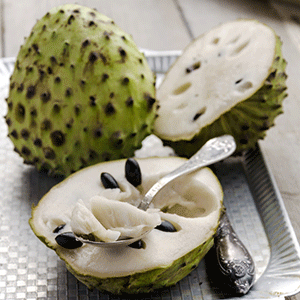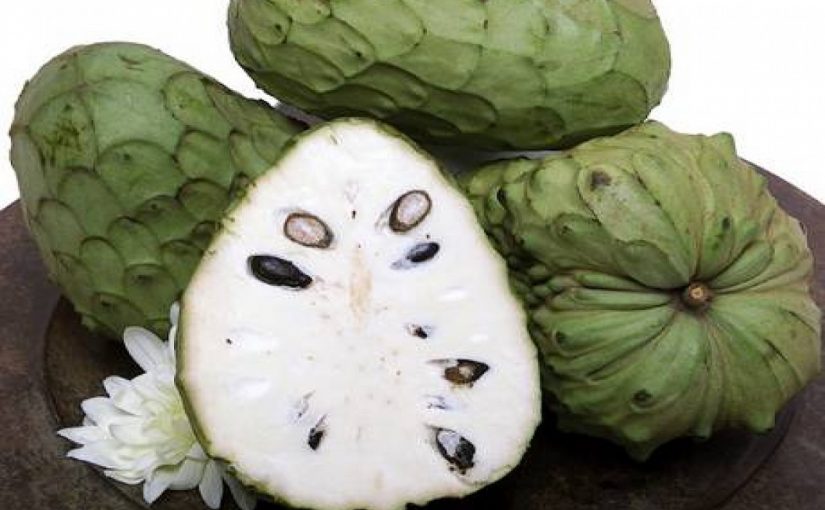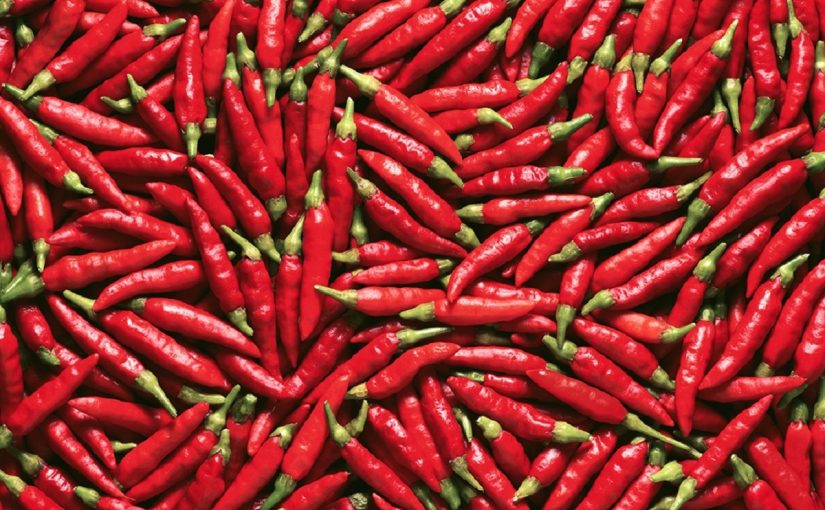23.3.2020
There is a place in Reggio Calabria province, where grows the exotic fruit you never imagined to see, “Annona“. It enriches the “Falcomatà” seafront, in the very heart of Reggio, also known as “the most beautiful kilometer in Italy” (by the poet Gabriele D’Annunzio).

Along this splendid walk you are able to watch to probably the most fascinating place of the city of Reggio. Overlooking the sea you can distinguish a multitude of palm trees and exotic plant species, while along the avenue you can admire fantastic Art Nouveau style buildings, such as Palazzo Zani, Palazzo Spinelli and Villa Genovese Zerbi.
Furthermore, here you can find the sweetest South American origin fruit, the “Annona,” which grows not only on the beautiful Falcomatà seafront, but also throughout the all province of Reggio Calabria, and is generally used as an excellent ingredient for tasty desserts.

In Calabria the Annona is cultivated only in the areas of Reggio Calabria and throughout the coastal area that runs from Bagnara to Gioiosa Ionica. Isolately, it grows in Sicily, in the areas of Messina and Roccalumera. Furthermore, the specimens produced in the city of Reggio Calabria got a special protection, a Municipal Name of Origin: “Annona di Reggio“.
ORIGINS
Native to South American countries such as Peru and Ecuador, the Annona Cherimola has found in Reggio Calabria province the ideal conditions to grow and develop characteristics of excellence.
Annona in this area of Calabria is now present for more than two centuries, since the Spaniards introduced it on the land, and can, therefore, be considered in all respects a true goodness of tradition local. Especially from the varieties grown in the area some purely local variations have derived, whose development has been favored by both spontaneous selection and the intervention of farmers.

FEATURES
The Annona provides a wide range of varieties; the most common is the “Annona Cherimola“.
The plants, whose stem exceeds 2 meters in height, flourishes between the month of May and that of August, lasting, sometimes, until October.
The harvest, however, begins after about five to eight months after flowering and takes place before the fruit reaches full development.
The Annona of the Spanish variety are green in color and conical in shape, sometimes similar to a heart, with very thin skin and homogeneous and moderately depressed areoles. Local varieties, instead, are of irregular shape and often deformed, have a smoother skin of green-yellow color with possible brown spots and veins.

The average weight of a fruit is just over 200 grams; it is characterized by an incredibly sweet and aromatic flavor that resembles that of banana, pineapple, strawberry and other tropical fruits.
What makes Annona particularly appreciated is not only the very sweet and pleasant taste, but also the remarkable nutritional properties of its pulp, rich in sugars, proteins, vitamin C, calcium and potassium. The fruit is also practically fat-free and not excessively caloric. It suffice to say that 100 grams of Annona contain 68 Kcal, compared to 15.8 grams of carbohydrates, 0.2 fat, 2.2 fiber and 1.8 protein. Further, Annona is very rich in B vitamins, with traces of folic acid, riboflavin, pyridoxine and niacin.
In order to conserve Annona, local population of Reggio transforms it into various traditional confectionery products such as ice cream, sorbet, jam and delicious desserts.





 RECIPES
RECIPES